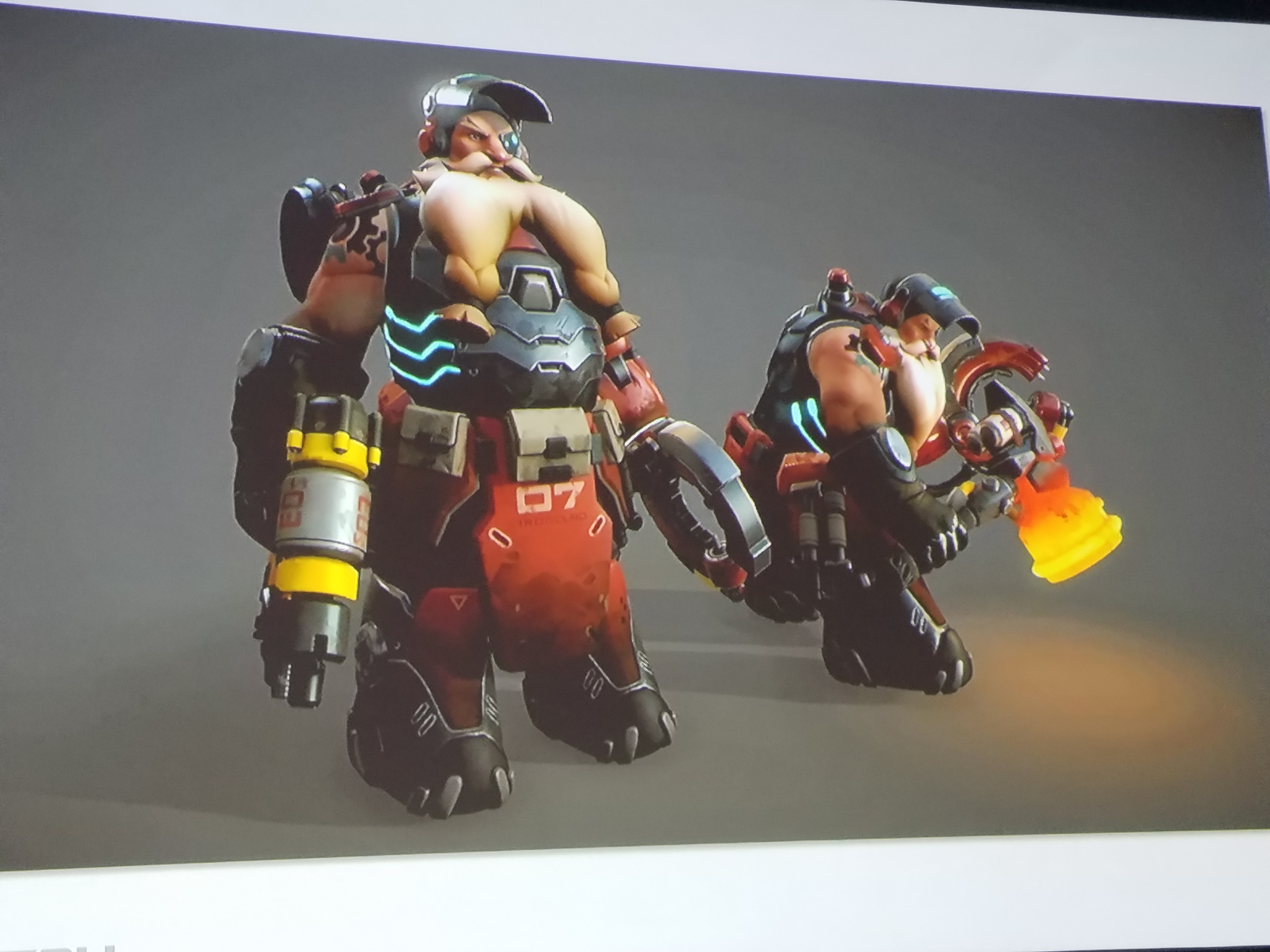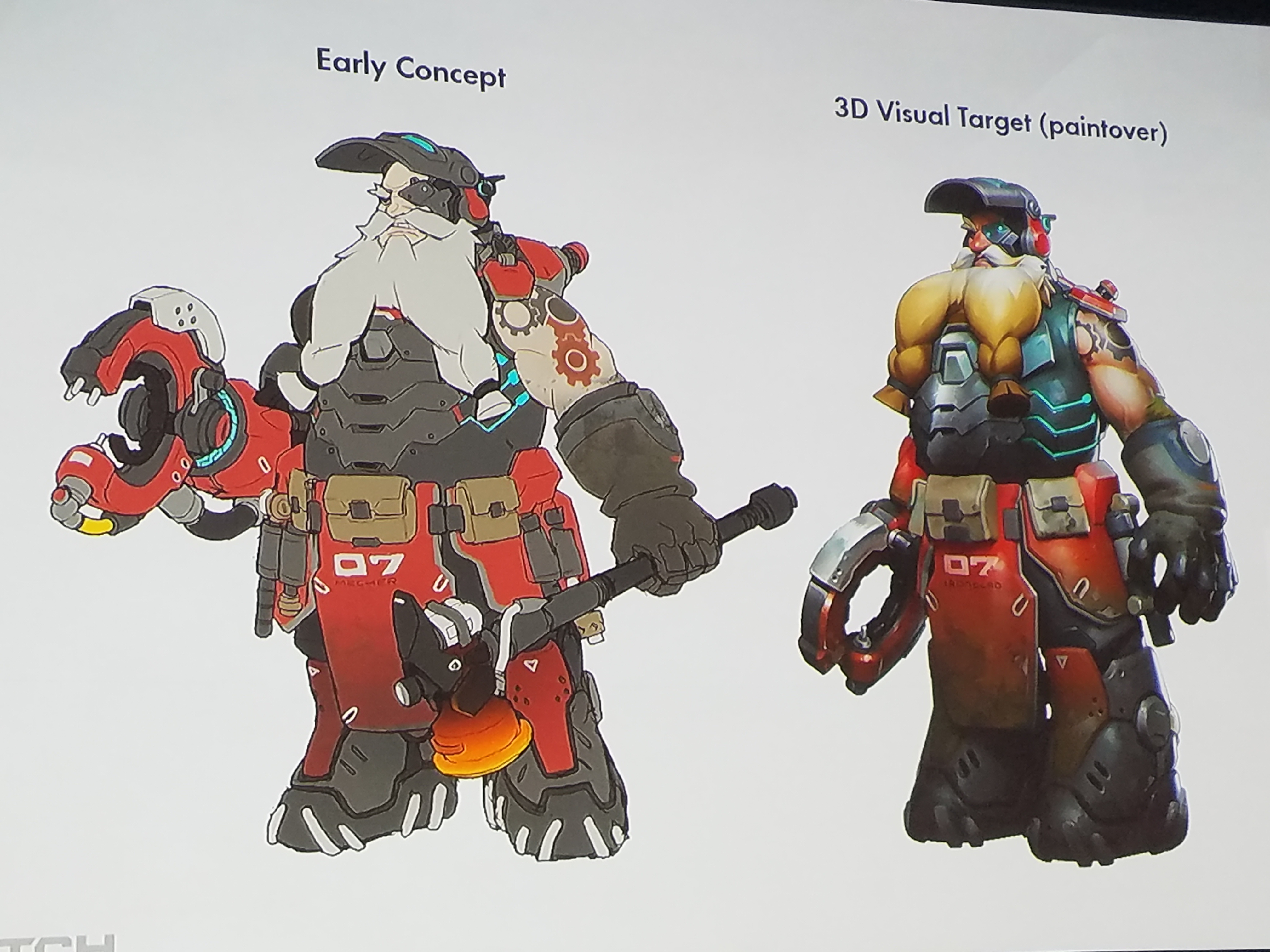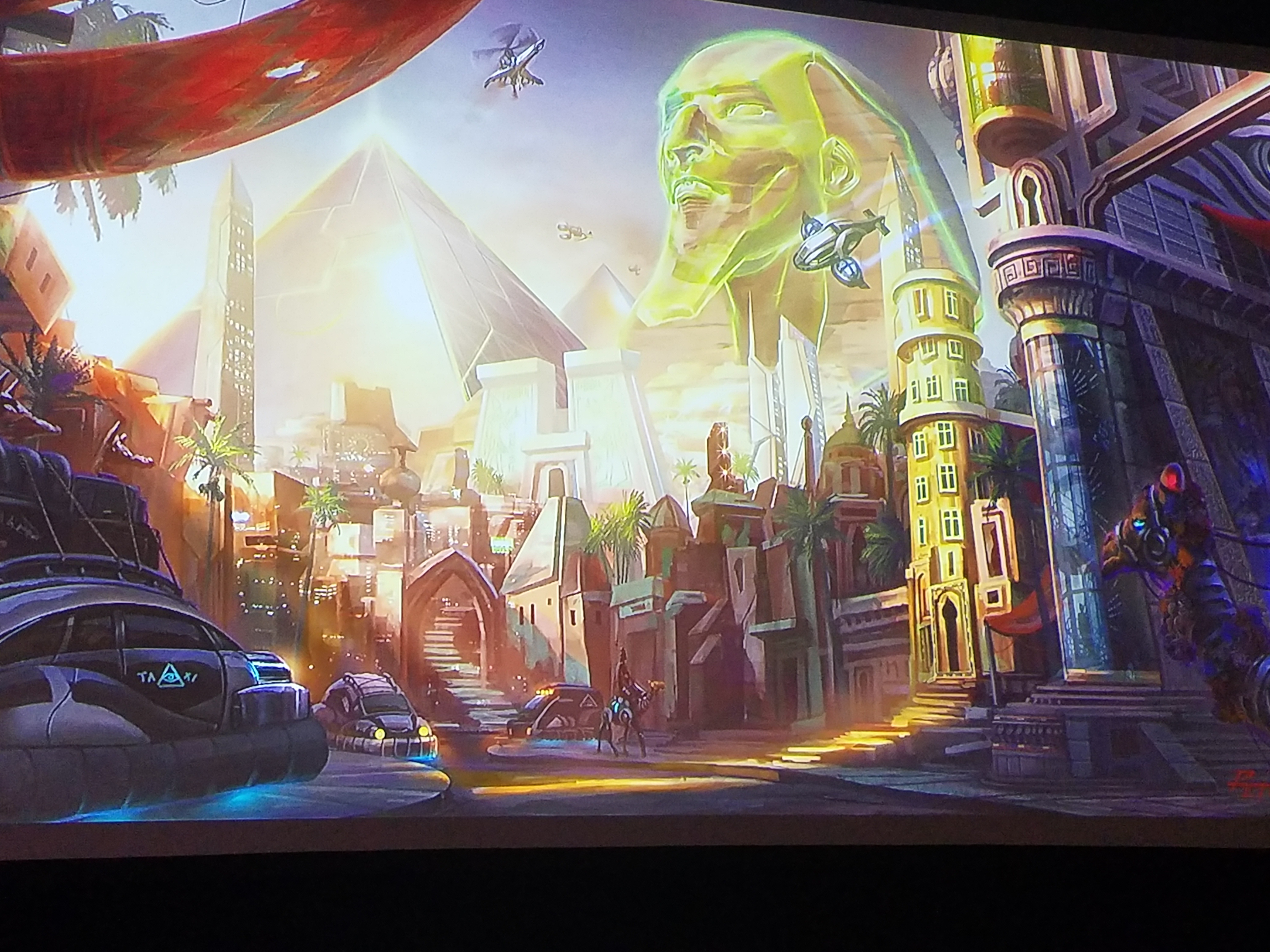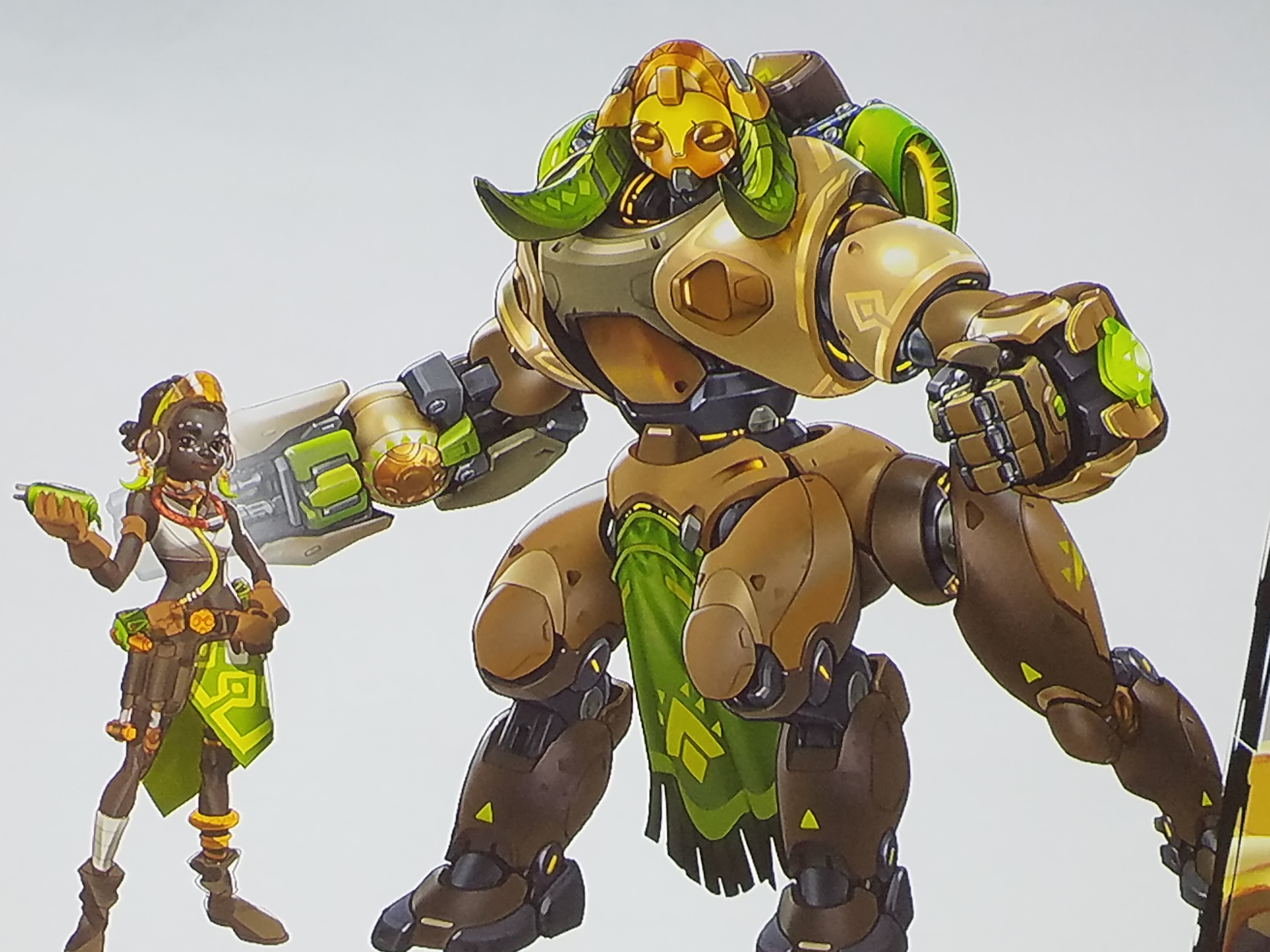How Torbjörn became the art inspiration for all of Overwatch
Blizzard's artistic direction began with tradition, tech camels, and the turret-building dwarf.

For a game that began from the ashes of Blizzard’s canceled MMO Titan, it’s only appropriate that the mainstay throughout all of Overwatch’s early artistic design was its de facto black sheep: a turret-loving dwarf named Torbjörn.
Blizzard artistic director William Petras and associate art director Arnold Tsang spoke at the 2017 Game Developers Conference about their artistic path from Titan to Overwatch, and how they pulled from both Blizzard’s classic background but also where the company had yet to tread.
After the team on Titan "failed horrifically" to find the perfect mix of fun and passion, the Overwatch team was desperate to prove that they belonged in the pantheon of beloved Blizzard games. If they wanted to belong, they’d have to design a world that not only stood out, but also fit within the style found in Blizzard’s art book
“We felt we really had to study the different games of Blizzard; really study their legacy,” Petras said. “I remember sitting at my little desk at work, and Arnold comes up to my desk and says ‘you know, Bill, whatever art style we come up with, it’s got to fit [in this book].’”

The team began theorizing about the worlds that Blizzard had already visited. With World of Warcraft’s epic fantasy realms, StarCraft’s dime novel science fiction, and Diablo’s classical gothicism, Petras, Tsang, and the rest of the team realized that Earth was their next, if slightly ironic frontier. They also felt that dwarves (or at least uniquely stout characters like StarCraft’s engineer Rory Swann) played a key role throughout almost all of Blizzard’s world-building.
Enter Torbjörn.
It was actually original Blizzard senior art director Sam Didier who encouraged Petras and Tsang to further exaggerate characters’ attributes, leading to the distinctive “silhouette” effect that allows players to identify any character at a distant glance. Initially, Torbjörn’s belly was covered in bright blue lights. To keep him more in character, Petras and Tsang took Didier’s advice and made Torbjörn's stomach glow a bright red to emphasize his background as a metalworker.
Keep up to date with the most important stories and the best deals, as picked by the PC Gamer team.

“With Torb, it was like what are these Tron lights?” Tsang said. “Instead of this, what if his belly were a living furnace? He’s just steaming with energy.”
From there, while developing other characters, Petras and Tsang would utilize Torbjörn as a guiding throughline. While early art of Anubis (the first map the Overwatch team designed) featured everything from a massive holographic sphinx head to robotic “tech camels” wandering the streets, they also placed Torbjörn within the art to see whether or not such a distinct, but familiar character felt “right” standing within locations filled with differing cultures.
“Torbjörn was very important on the art side, because he was our test case,” Petras said. “Whatever he felt like, his character had to feel right.”
Petras and Tsang added one additional bit of trivia for Torbjörn enthusiasts: The character is actually named after Overwatch’s lead technical artist Torbjörn Malmer. No, I didn’t know it was a real name either.

Tsang briefly touched on Zarya’s artistic inspiration by describing how he found himself watching Russian athletes perform weightlifting routines during the Olympics.
“It really felt like, you know, that’s not something we see in any games,” Tsang said.
Petras and Tsang were also on hand to comment on the newly revealed hero Orisa, created by the 11-year-old genius Efi Oladele.
“She’s very new at being a hero, very new to the world, so she’s almost like a new baby” Petras said. “She’s still getting used to her abilities, to being a hero, but through Efi’s optimism and her bravery and honor, she’s ready to be the newest hero in Overwatch. We knew we wanted to do a tank. They’re all cool, but we wanted something different, so this idea of a quadruped tank was really inspiring to us. It was a huge challenge that the animators also felt up to tackling. Some of that resonated with this idea of an African mech that we always wanted to do. We liked this quadruped tank, with animalistic inspirations, like rhinos and elephants.”

Petras added that an early prototype of Orisa functioned much like a rhinoceros.
“We’re really proud of how Orisa came up, because she has a lot of character, and she really evolves that Omnic ecology. We talk a lot about Omnics in the world of Overwatch. So far we have Zenyatta and Bastion, but we wanted to show the potential and breadth that Omnics could have in the Overwatch universe. We want to show what Omnics could really be.”
Joseph Knoop is a freelance writer specializing in all things Fortnite at PC Gamer. Master of Creative Codes and Fortnite's weekly missions, Joe's always ready with a scoop on Boba Fett or John Wick or whoever the hell is coming to Fortnite this week. It's with a mix of relief and disappointment that he hasn't yet become a Fortnite skin himself. There's always next season...


